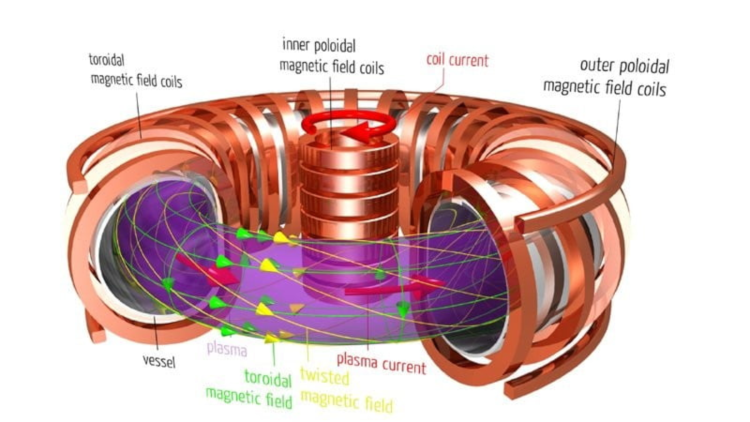New plasma findings could combat climate change
Scientists from Ireland and France have made a discovery about exotic material that could be the key to developing safe, clean and efficient nuclear energy generators and combating climate change.
The scientists have made a new finding regarding how this exotic, but poorly understood, “fourth state of matter”, known as plasma, behaves. Large radio telescopes and ultraviolet cameras on a NASA spacecraft were used to gain this insight.
“We combined the radio observations with ultraviolet cameras on NASA’s space-based Solar Dynamics Observatory spacecraft to show that plasma on the Sun can often emit radio light that pulses like a lighthouse. We have known about this activity for decades, but our use of space and ground-based equipment allowed us to image the radio pulses for the first time and see exactly how plasmas become unstable in the solar atmosphere” explained Dr Eoin Carley, Postdoctoral Researcher at Trinity College Dublin and the Dublin Institute of Advanced Studies (DIAS).
Plasma
Most matter we encounter in life manifests in the form of solid, liquid and gas. However, most of the Universe is composed of plasma – a highly unstable and electrically charged fluid. The Sun is made up of this plasma.

Despite being the most common form of matter, plasma remains a mystery due to its scarcity in natural conditions on Earth. While special laboratories can recreate the extreme conditions required to study the substance, the Sun represents an all-natural laboratory for this purpose.
“The solar atmosphere is a hotbed of extreme activity, with plasma temperatures in excess of 1 million degrees Celsius and particles that travel close to light-speed. The light-speed particles shine bright at radio wavelengths, so we’re able to monitor exactly how plasmas behave with large radio telescopes” said Dr Carley.
Fusion Reactors
Studying how plasma reacts in the Sun’s atmosphere provides an experimental environment impossible to recreate on Earth. Comparing these reactions to those on Earth allows further insight into the construction of magnetic confinement fusion reactors.

These types of nuclear energy generators are much safer, cleaner and efficient than their fission reactor counterparts currently used for energy today. Whereas fission breaks plasma atoms apart, fusion binds them. It doesn’t require highly radioactive fuel and much of its waste material is inert helium.
“The only problem is that nuclear fusion plasmas are highly unstable. As soon as the plasma starts generating energy, some natural process switches off the reaction. While this switch-off behaviour is like an inherent safety switch — fusion reactors cannot form runaway reactions — it also means the plasma is difficult to maintain in a stable state for energy generation” added Dr Carley.
Combating Climate Change
Experts reckon that given our current economic and atmospheric trajectory, there is a 5% chance that global sea level rise could exceed two metres by 2100. That has the potential to displace some 200 million people. The Syrian conflict displaced around a million.
To prevent the worst consequences of climate change, the Intergovernmental Panel on Climate Change estimated in October 2018 that we 12 years to slash emissions by 45%. Nuclear power produces very few life-cycle carbon emissions, although its implementation is subject to debate.

“From uranium mines to nuclear waste, including radioactive and chemical pollution from nuclear reactors, every phase of the nuclear cycle brings about pollution … 300,000 tons of spent nuclear fuel have already been accumulated worldwide. These highly radioactive nuclear wastes will remain dangerous for over hundreds of thousands of years,” said a report ‘Nuclear power: a false solution to climate change’ published by Réseau Action Climat – France (RAC-F).
Energy from Seawater and the Moon
This is one criticism levied at nuclear energy. However, this is an issue caused by nuclear fission plants. If successful, nuclear fusion could harness as much energy from a glass of seawater as from a barrel of oil, with very little waste.
The major drawback with fusion power is its energy cost-effectiveness. It currently costs more energy to perform fusion experiments than the energy it produces. However, if this problem is solved, fusion could provide energy on Earth for thousands of years.
“Nuclear fusion could provide an alternative to carbon-based energy production. For the moment however, much research is still to be done on its viability as a clean and efficient energy source. This viability is a question of how efficient a future fusion reactor would be, the cost of the fuel, or humanity’s future energy needs” explained Dr Carley to HeadStuff.

Fusion reactors use hydrogen or helium as fuel. Seawater is loaded with the hydrogen isotope, deuterium. This isotope could be bonded with helium-3, an element potentially found in abundance on the Moon. This could fuel fusion reactors for centuries.
“Nuclear fusion is all based around our understanding of how plasmas behave … Our recently published research is a small step in our understanding of plasmas in nature. It will take the collective effort of all plasma research (both astrophysical and lab-based) to finally bring us to that end-goal of sustained fusion energy.
“Nuclear fusion is still a long way off. It’s transition into a viable energy source will only be realised with a global effort into fundamental research into the nature of plasmas. Ireland is part of this global effort, and have many scientists studying plasmas both in space and the lab. We should continue to promote plasma research going into the future, whether it is blue skies studies of plasmas on stars or applied research in the laboratory. They both contribute to an understanding of nature in a way that will benefit humanity in the near future.”
[perfectpullquote align=”full” bordertop=”false” cite=”” link=”” color=”#4AC1A8″ class=”” size=””]Suggested Reading: Black Hole Image Could Update Theory of Gravity[/perfectpullquote]
